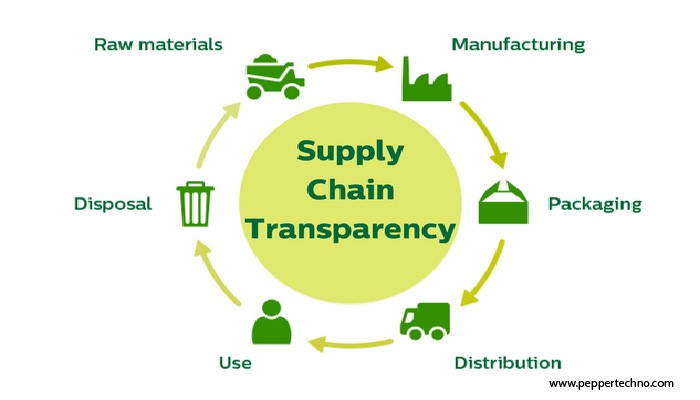Shining a Light on Transparency: Exploring Supply Chain Transparency Tools
In an era marked by heightened awareness of ethical sourcing, environmental sustainability, and corporate responsibility, supply chain transparency has emerged as a critical imperative for businesses across industries. Consumers are increasingly demanding visibility into the journey of products from raw materials to finished goods, prompting companies to adopt robust transparency measures.
Enter supply chain transparency tools – innovative technologies that enable organizations to track, trace, and communicate the intricacies of their supply chains. In this article, we delve into the world of supply chain transparency tools, exploring their features, benefits, and impact on businesses and consumers alike.

Understanding Supply Chain Transparency
The Importance of Transparency
Supply chain transparency refers to the practice of openly sharing information about the origins, processes, and conditions associated with the production of goods and services. By providing visibility into every stage of the supply chain, companies can enhance accountability, mitigate risks, and build trust with stakeholders. Moreover, transparency enables consumers to make informed purchasing decisions, aligning their values with the products they choose to support.
Challenges and Complexity
Achieving supply chain transparency is no small feat, particularly in today’s globalized economy characterized by complex networks of suppliers, manufacturers, and distributors spanning multiple continents. Numerous challenges, including fragmented data systems, opaque subcontracting practices, and limited visibility into lower-tier suppliers, complicate efforts to trace the origins of products accurately. Additionally, concerns about intellectual property protection and competitive advantage further complicate transparency initiatives for some organizations.
The Role of Supply Chain Transparency Tools
Introduction to Tools and Technologies
Supply chain transparency tools encompass a diverse array of technologies and platforms designed to facilitate the collection, analysis, and dissemination of supply chain data. From block chain-based ledgers to cloud-based supply chain management systems, these tools offer organizations the means to track and trace their products with unprecedented granularity. By leveraging advanced technologies such as IoT sensors, AI-powered analytics, and machine learning algorithms, companies can gain real-time insights into their supply chains, identify potential risks, and drive continuous improvement.
Key Features and Capabilities
Modern supply chain transparency tools boast a host of features and capabilities tailored to the unique needs of businesses operating in diverse industries. At their core, these tools enable organizations to capture data at various touch points along the supply chain, including raw material sourcing, manufacturing, transportation, and distribution. They also facilitate data aggregation and analysis, allowing companies to identify trends, patterns, and anomalies that may signal potential risks or opportunities. Furthermore, many platforms offer customizable dashboards and reporting functionalities, empowering users to communicate supply chain insights effectively to internal and external stakeholders.
Block chain Technology and Distributed Ledgers
Block chain technology has emerged as a game-changer in the realm of supply chain transparency, offering a decentralized and immutable ledger for recording transactions and data exchanges. By leveraging block chain-based platforms, companies can create transparent and tamper-proof records of every transaction and interaction within their supply chains. This enables unprecedented levels of traceability and accountability, as each participant in the supply chain can verify the authenticity and integrity of data in real-time. Moreover, block chain-based systems enhance security and privacy by encrypting sensitive information and limiting access to authorized parties.
Benefits and Impact
Enhanced Traceability and Accountability
One of the primary benefits of supply chain transparency tools is enhanced traceability and accountability throughout the supply chain. By capturing detailed data about the origins, processes, and actors involved in the production of goods, companies can trace products from source to shelf with unprecedented accuracy. This not only enables organizations to identify and address potential risks such as labor exploitation, environmental degradation, and product counterfeiting but also fosters greater accountability among suppliers and partners.
Risk Mitigation and Compliance
Supply chain transparency tools empower companies to proactively identify and mitigate risks associated with their supply chains, ranging from supplier disruptions to regulatory non-compliance. By monitoring key performance indicators, such as supplier performance, lead times, and inventory levels, organizations can anticipate potential bottlenecks and take preemptive action to ensure continuity of operations. Moreover, transparency tools help companies comply with a growing number of regulations and standards related to ethical sourcing, environmental sustainability, and product safety, reducing the risk of legal and reputational harm.
Consumer Trust and Brand Loyalty
Perhaps most importantly, supply chain transparency tools play a pivotal role in building consumer trust and brand loyalty. In an era of heightened consumer consciousness, transparency has become a key differentiator for brands seeking to establish credibility and authenticity. By openly sharing information about their supply chains, companies can demonstrate their commitment to ethical practices, environmental stewardship, and social responsibility, thereby engendering trust and loyalty among consumers. Moreover, transparency fosters greater engagement and dialogue with customers, enabling companies to align their values with those of their target audience and cultivate lasting relationships.
Challenges and Opportunities
Data Quality and Interoperability
Despite the numerous benefits of supply chain transparency tools, several challenges remain to be addressed. Chief among these is the issue of data quality and interoperability. Given the disparate systems and standards employed by different stakeholders in the supply chain, ensuring the accuracy, consistency, and compatibility of data poses a significant challenge. Moreover, concerns about data privacy, security, and ownership must be carefully navigated to foster trust and collaboration among participants.
Collaboration and Partnership
Addressing these challenges requires collaboration and partnership among stakeholders across the supply chain ecosystem. By fostering greater transparency and information sharing, companies can create a culture of collaboration that transcends traditional boundaries and silos. This not only enhances the resilience and agility of supply chains but also fosters innovation and value creation. Moreover, partnerships between businesses, governments, and civil society organizations can drive collective action to address systemic issues such as forced labor, deforestation, and climate change.
Emerging Trends and Future Outlook
Looking ahead, the future of supply chain transparency is ripe with potential. As technology continues to evolve and consumer expectations evolve, so too will the tools and strategies employed to achieve transparency. Emerging trends such as the Internet of Things (IoT), artificial intelligence (AI), and predictive analytics promise to further enhance the visibility and agility of supply chains, enabling organizations to anticipate and respond to emerging challenges in real-time. Moreover, initiatives such as open data standards, industry-wide collaboration, and regulatory reform will play a crucial role in shaping the future landscape of supply chain transparency.
Conclusion
Supply chain transparency tools represent a transformative force in the realm of global commerce, enabling organizations to navigate complex supply chain ecosystems with greater visibility, accountability, and agility. By harnessing the power of technology and collaboration, companies can unlock new opportunities for innovation, sustainability, and social impact. While challenges persist, the benefits of transparency – including enhanced traceability, risk mitigation, and consumer trust – far outweigh the costs. As businesses continue to embrace transparency as a strategic imperative, the stage is set for a more sustainable and equitable future for all stakeholders involved.



